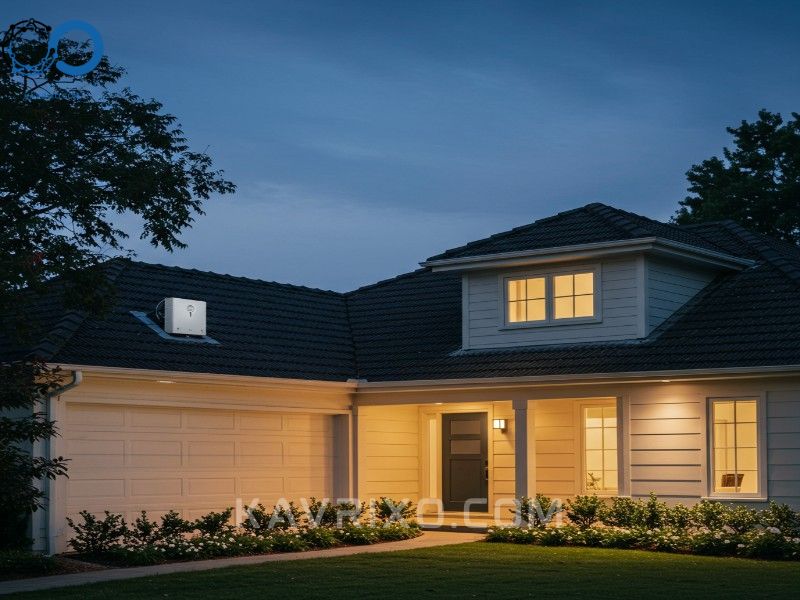For decades, installing a reliable home security system meant drilling holes, running cables through walls, and often requiring professional installation that was both time-consuming and expensive. Today, the landscape of home protection has fundamentally shifted. Thanks to advancements in low-power communication technologies and efficient battery design, the modern battery powered security alarm has emerged as the gold standard for versatility, reliability, and ease of deployment.
These sophisticated systems offer robust protection against intrusion, fire, and environmental hazards, all while operating completely free of electrical wiring constraints. If you are a renter, a homeowner in a historic property, or simply someone who values a clean aesthetic and simple installation process, understanding the nuances of battery operated burglar alarm systems is essential. This comprehensive guide will explore everything from the core components and installation practicality to the crucial details of long-term reliability and maintenance.
Contents
- 1 The Rise of Wireless Security: Why Choose Battery Power?
- 2 Key Components of Battery Operated Burglar Alarm Systems
- 3 Installation and DIY Feasibility
- 4 Reliability and Maintenance: Addressing Power Concerns
- 5 Advanced Features Driving Modern Battery Powered Systems
- 6 Choosing the Right Battery Powered Security Alarm for Your Needs
The Rise of Wireless Security: Why Choose Battery Power?
The transition from hardwired to wireless security mirrors the broader technological shift towards mobile and decentralized devices. Consumers no longer want security features dictated by the nearest power outlet. They demand flexibility, scalability, and performance, all of which are hallmarks of a quality battery powered security alarm.
Defining the Modern Battery Powered Security Alarm
A battery powered security alarm system is fundamentally a network of interconnected devices—sensors, cameras, sirens, and control panels—that communicate wirelessly, often utilizing protocols like Z-Wave, Zigbee, or proprietary low-power radio frequencies. Crucially, the peripheral devices (motion detectors, door/window contacts, glass break sensors) are entirely self-contained, drawing power from internal batteries rather than relying on a continuous electrical current from the building’s main wiring.
While the central hub or main control panel typically connects to AC power (for continuous charging and processing power), the system’s ability to function independently during a power outage is what truly defines its reliability. The reliance on battery power for the sensors themselves eliminates complex wiring, making installation non-invasive and incredibly fast.
The Core Advantages Over Traditional Wired Systems
The benefits of utilizing battery operated burglar alarm systems are numerous and extend far beyond simple installation convenience:
- Flexibility and Portability: Since there are no wires, sensors can be placed virtually anywhere: high ceilings, sheds, detached garages, or even temporary structures. If you move homes, you simply unmount the sensors and take the entire system with you. This portability is a massive cost saving.
- Aesthetics and Non-Invasive Installation: There’s no need to bore holes through drywall or fish wires through conduits, preserving the structural and decorative integrity of your home. This is especially vital in older homes where wiring upgrades are complex, or in rental properties where major modifications are prohibited.
- Power Outage Resilience: While a hardwired system might have a battery backup for the main panel, the wires themselves can be cut or compromised. A truly wireless, battery powered security alarm maintains protection even if the power grid fails or if an intruder attempts to disable the main power source outside the home. Every sensor continues monitoring independently.
- Scalability: Expanding coverage is as simple as purchasing a new sensor, pairing it with the main hub, and sticking it onto a surface. There is no ceiling on how many devices can be added, allowing the system to grow with your needs.
Ideal Scenarios for Battery Operation
While the flexibility of wireless systems appeals to everyone, there are specific situations where a battery operated burglar alarm system is the only practical choice:
- Rental Properties: Tenants require security without permanent modifications. A DIY, battery-powered system is ideal for securing an apartment or rented house and can be removed without penalty.
- Historic or Architecturally Significant Homes: Preserving original plaster, woodwork, and exterior finishes is paramount. Wireless sensors mount discreetly and require no destructive installation methods.
- Outbuildings and Remote Structures: Connecting a hardwired sensor to a shed 100 feet from the house is cost-prohibitive. A battery-powered sensor can bridge that distance wirelessly, securing areas previously left unprotected.
- Temporary Monitoring Needs: Construction sites, vacation homes during the off-season, or monitoring while waiting for permanent wiring installation can all benefit from temporary, robust battery powered security alarm coverage.
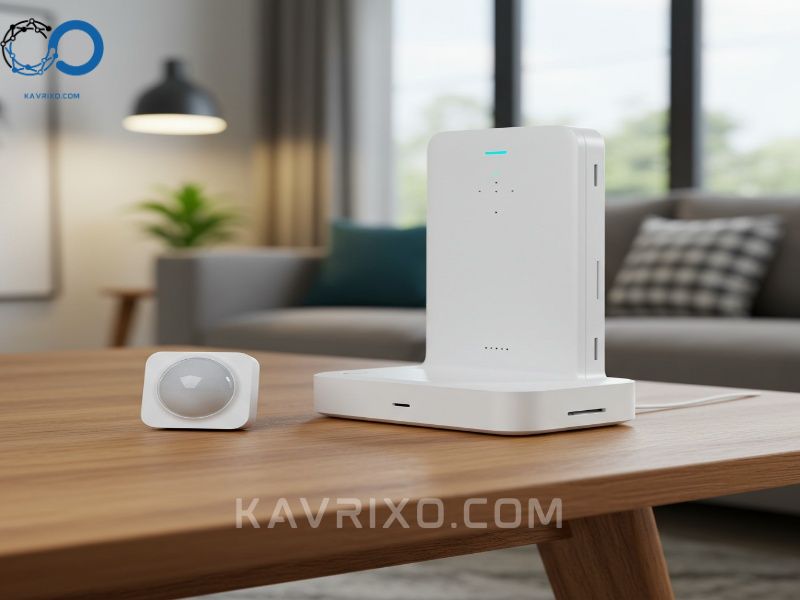
Key Components of Battery Operated Burglar Alarm Systems
Understanding how these systems work requires looking closely at the specific components that rely entirely on battery power and how they communicate effectively without constant power draw.
Central Hubs and Control Panels (The Brain)
While the sensors run on batteries, the central hub is the nerve center. It receives signals from all the battery operated burglar alarm systems components, interprets them, and initiates the necessary response (sounding the siren, sending notifications).
The hub typically plugs into AC power but includes a substantial backup battery (often rechargeable lithium-ion) capable of running the entire system—including cellular communication—for 12 to 24 hours during an outage. This duality ensures that even if an intruder cuts the power line, the system remains fully functional, relying on the sensor batteries for monitoring and the hub battery for communication.
Motion Sensors (PIR and Dual-Tech)
Motion sensors are the cornerstone of interior protection. Passive Infrared (PIR) sensors detect heat signatures (body warmth) moving across a field of view. Because these devices need to constantly monitor the environment, optimizing battery life is critical. Modern PIR sensors use sophisticated “sleep” modes, waking up only for brief intervals to scan, drastically extending battery life, often up to five years on a single set of batteries.
Some advanced battery powered security alarm systems utilize Dual-Tech sensors, which combine PIR with microwave technology to reduce false alarms. These sensors are slightly more power-hungry but offer superior accuracy in complex environments.
Door and Window Contact Sensors
These are perhaps the most common and energy-efficient components. Contact sensors consist of two pieces: a sensor mounted on the door/window frame and a magnet mounted on the moving part. When the door or window opens, the magnetic field is broken, triggering an immediate alert.
Since these sensors only consume significant power when the state changes (from closed to open), their battery life is exceptional, often lasting five to seven years. They are the backbone of perimeter protection in any battery operated burglar alarm system.
Sirens and Notifications (Local vs. Remote)
Sirens can be internal (built into the hub) or external (mounted outside the home). External sirens, particularly those placed far from the main power source, must be entirely battery-powered. These devices typically use high-capacity batteries (sometimes D-cells or specialized power packs) because they need to draw massive amounts of power instantly to sound a piercing alarm, though they remain dormant 99% of the time.
Notification is handled by the central hub, utilizing Wi-Fi and cellular backup (GSM/LTE). The reliance on cellular service ensures that even if internet or power is completely severed, the alarm signal can still reach professional monitoring centers or your smartphone.
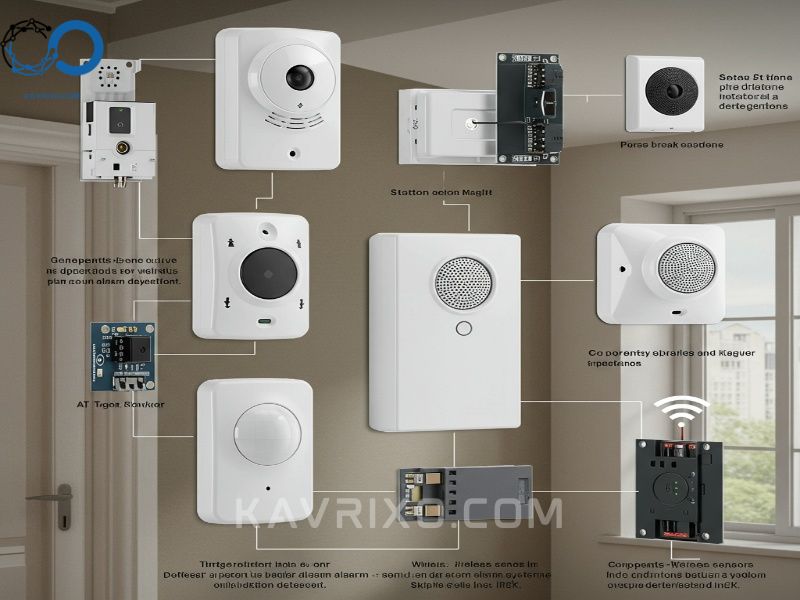
Power Management and Battery Lifespan
The longevity of a battery powered security alarm hinges on excellent power management. Manufacturers achieve multi-year lifespans through several methods:
- Low-Power Communication Protocols: Utilizing specialized wireless standards (like Z-Wave or Zigbee) designed for low data rates and minimal power consumption, unlike standard high-bandwidth Wi-Fi.
- Sleep Cycling: Sensors remain in a deep sleep state, waking up only to report status or when triggered by an event.
- Battery Technology: The choice of battery is crucial. Lithium batteries (used in many high-end systems) offer superior performance in extreme temperatures and maintain a stable voltage for longer than standard alkaline batteries, justifying their higher cost through extended service life.
Installation and DIY Feasibility
One of the most compelling aspects of modern battery operated burglar alarm systems is the seamless, often tool-free, installation process. The “DIY” label is no longer synonymous with rudimentary security; it now means professional-grade protection accessible to everyone.
Planning Your Coverage Map
Before deployment, effective planning is key. Since you aren’t restricted by wiring, you can focus purely on vulnerability.
- Identify Entry Points: Prioritize all ground-floor doors and windows for contact sensors.
- Establish Zones of Movement: Place motion sensors strategically to cover main hallways, stairwells, and rooms with high-value items, avoiding placement directly opposite heat sources (like vents) to prevent false alarms.
- Test Signal Strength: While battery power means no electrical constraints, wireless range is still a factor. Most hubs offer a signal strength test feature during setup, ensuring all remote sensors can reliably communicate.
The Ease of Plug-and-Protect Deployment
The physical installation of a battery powered security alarm is generally completed in three simple steps:
- Set up the Hub: Plug the central hub into power and internet (if required) and connect it to your mobile app.
- Pair the Sensors: Follow the app’s instructions to pair each sensor individually. This often involves scanning a QR code or pressing a pairing button.
- Mount the Sensors: Using pre-applied adhesive strips (like 3M VHB tape), mount the contact sensors, motion detectors, and glass-break sensors in their predetermined locations. The adhesive is strong enough for permanent placement but can be removed cleanly if you move or reposition the device.
This simplicity drastically reduces the time and labor involved, making the total installation time for an average home often less than two hours.

Integrating with Smart Home Ecosystems
Modern battery operated burglar alarm systems are rarely isolated units. They are designed to integrate seamlessly with broader smart home ecosystems (like Amazon Alexa, Google Home, or Apple HomeKit). This integration allows for powerful automation:
- Automated Arming/Disarming: Set the system to automatically arm when the smart thermostat goes into “away” mode.
- Lighting Responses: If a motion sensor is triggered, the system can instruct smart lights to flash, potentially deterring intruders and making it easier for responders to locate the house.
- Voice Control: Arming or disarming the battery powered security alarm can often be done via simple voice commands.
Troubleshooting Common Installation Issues
While installation is simple, wireless systems can occasionally encounter minor hiccups, primarily related to communication:
- Signal Blockage: Thick stone walls, large metal objects (like refrigerators), or dense electrical wiring bundles can sometimes interfere with the wireless signal. Repositioning the sensor or adding a signal repeater (which may require AC power) can resolve this.
- False Triggers: If a motion sensor is placed too close to a pet feeding station or a direct sunlight path, it might generate false alarms. Adjusting the sensor sensitivity or mounting location is usually the fix.
Reliability and Maintenance: Addressing Power Concerns
The single most common concern voiced by potential buyers considering a battery powered security alarm is reliability. Consumers often wonder: If everything runs on batteries, won’t the system fail when I need it most? The answer lies in sophisticated monitoring and robust power management protocols.
Backup Power vs. Primary Battery Power
It’s crucial to distinguish between the two types of battery usage in these systems:
- Primary Power (Sensors): This is the long-life, disposable (or sometimes proprietary rechargeable) battery powering the individual contact or motion detectors. These are designed for endurance, lasting years.
- Backup Power (Hub): This is the rechargeable battery inside the main control panel, designed to take over instantly if the main AC power fails. This backup is essential for maintaining connectivity (cellular communication) during blackouts.
A quality battery operated burglar alarm system provides redundancy in every component, ensuring that a single point of failure (like a power outage) does not render the system useless.
Low-Battery Alerts and Proactive Replacement
Manufacturers have engineered these systems to be proactive about power maintenance. Sensors constantly monitor their own voltage levels and report their status back to the central hub.
- Stage 1 Warning: The user receives a notification (via app and hub display) that a sensor’s battery is beginning to drop, often weeks or even months before the battery actually dies.
- Stage 2 Warning: A critical warning is issued when power drops below a safe operational threshold, typically requiring immediate replacement.
This proactive alerting mechanism ensures that system maintenance is a scheduled, low-stress task rather than an emergency repair. Ignoring these alerts is the only way a system would fail due to power loss.
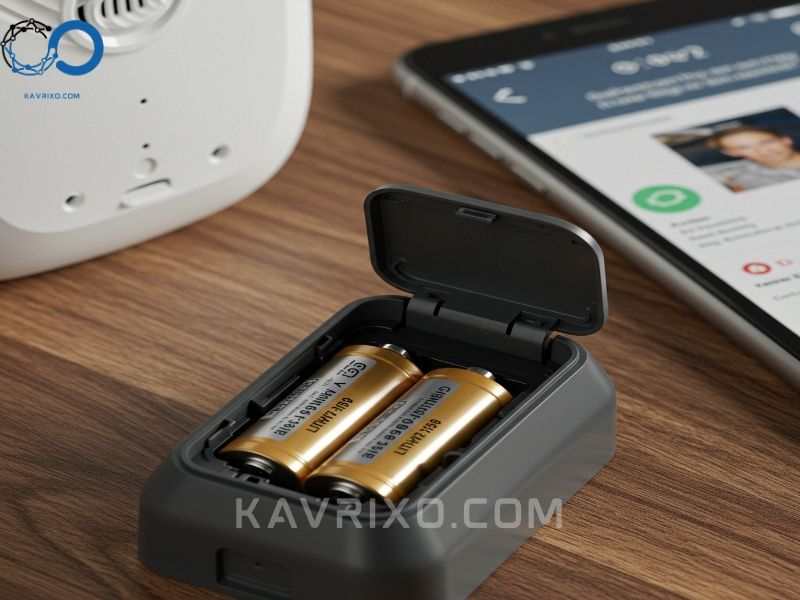
Signal Integrity and Range (Avoiding Interference)
While battery power provides physical freedom, maintaining a strong wireless signal is paramount for reliability. Wireless communication relies on radio frequencies, which can sometimes be susceptible to interference from other high-traffic devices (like older cordless phones or microwave ovens).
Modern battery operated burglar alarm systems often utilize frequency hopping technology and mesh networking capabilities. Mesh networks allow sensors to communicate not just with the hub, but also with each other, extending the overall range and creating multiple reliable pathways for the alarm signal to reach the control panel. This dramatically enhances the resilience of the system, particularly in larger homes or properties with thick walls.
Extreme Weather Performance
Temperature variations can significantly affect battery performance, especially in components placed outdoors (e.g., external sirens, gate sensors). Standard alkaline batteries degrade quickly in freezing temperatures.
High-quality battery powered security alarm systems utilize specialized batteries (usually lithium) that are rated for extreme temperature ranges, ensuring that the system maintains reliable monitoring capabilities whether the sensor is exposed to a sub-zero winter or a scorching summer day. This resilience is a key factor in ensuring year-round, reliable perimeter protection.
Advanced Features Driving Modern Battery Powered Systems
The evolution of the battery operated burglar alarm system goes far beyond simple contact sensors. Today’s systems incorporate sophisticated technology that enhances situational awareness and user control.
Visual Verification (Integrated Cameras)
Many modern systems integrate completely wireless, battery-powered cameras. These cameras typically remain dormant to conserve power, activating instantly upon an alarm event or when triggered by motion.
- Doorbell Cameras: These are typically hardwired for power but use battery backup. However, specialized low-power camera systems, often used in conjunction with a battery powered security alarm, provide visual confirmation of an intrusion, allowing the user or the monitoring center to verify if an alarm is genuine before dispatching authorities.
- Image Capture: Some motion sensors include small integrated cameras that capture a short burst of still images upon activation, sending these low-data-rate images immediately to the hub, again serving the purpose of visual verification without the high power drain of continuous video streaming.
Environmental Monitoring (Smoke and CO Detection)
Security is holistic. Modern battery powered security alarm systems seamlessly integrate fully wireless smoke, fire, carbon monoxide (CO), and even water leak detectors. These life-safety devices are entirely battery-powered (often using 10-year sealed batteries) and communicate directly with the central hub.
If a smoke detector is triggered, the entire security system reacts—sending alerts, flashing lights, and potentially initiating contact with emergency services—providing a comprehensive safety net far beyond simple intrusion detection.
Professional Monitoring vs. Self-Monitoring Options
One of the great choices offered by contemporary battery powered security alarm providers is the flexibility in response protocols:
- Self-Monitoring: The user receives all alerts directly to their smartphone. They are responsible for contacting authorities. This is a popular, cost-effective option for many users of battery operated burglar alarm systems.
- Professional Monitoring: For a monthly fee, a third-party monitoring center receives all alarm signals. They verify the incident and handle the dispatch of police or fire services, ensuring rapid response even if the homeowner is unreachable.
Encryption and Cybersecurity Measures
Since these are wireless, internet-connected systems, cybersecurity is paramount. High-quality battery powered security alarm manufacturers employ advanced encryption (e.g., AES 256-bit) to protect communication between the sensors, the hub, and the cloud servers. This prevents potential jamming of the wireless signal and unauthorized access to the system controls. Regular firmware updates pushed wirelessly to the hub ensure that the system remains protected against emerging digital threats.
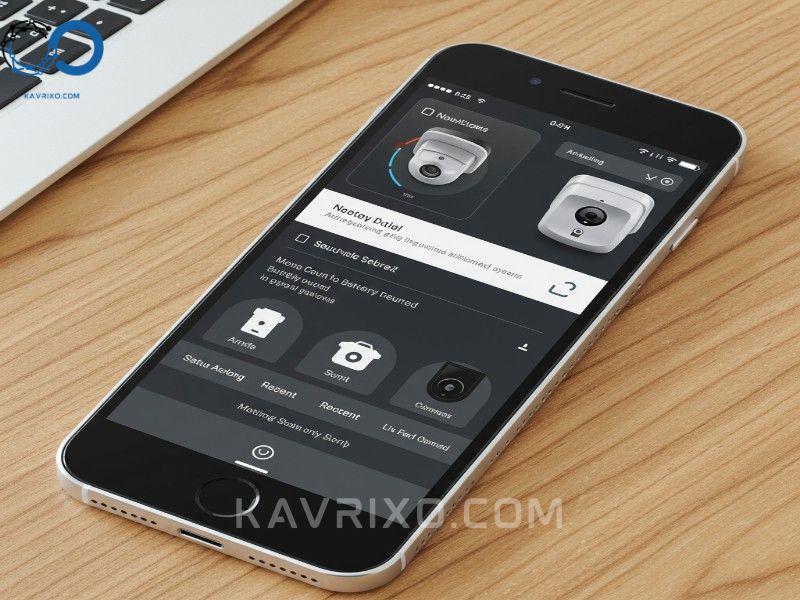
Choosing the Right Battery Powered Security Alarm for Your Needs
Selecting the ideal system requires balancing functionality, reliability, and cost. Given the proliferation of options on the market, a systematic approach is best.
Assessing Cost vs. Features (The Value Proposition)
While the initial cost of battery powered security alarm hardware can sometimes be higher than basic wired systems, the total cost of ownership is often lower due to eliminating installation fees and offering greater flexibility.
- Budget Systems: Often rely solely on Wi-Fi and self-monitoring. Ideal for small apartments or users prioritizing low cost and simple intrusion alerts.
- Mid-Range Systems: Include cellular backup, professional monitoring options, and integration with Z-Wave/Zigbee devices. These offer a strong balance of features and reliability.
- Premium Systems: Feature advanced encryption, high-capacity lithium batteries, integrated video verification, and environmental monitoring. These are best suited for large homes or businesses requiring maximum redundancy and comprehensive coverage.
Ensure that the system you choose is designed to meet the specific requirements of your property, whether it’s large-scale outdoor coverage or focused interior protection.
Scalability and Future Expansion
If you plan to expand your home or add structures later, ensure the chosen battery operated burglar alarm system is scalable. Check the maximum number of devices the central hub can support and verify the availability of various sensor types (e.g., flood sensors, freeze detectors, garage door tilt sensors) within that specific brand ecosystem. Investing in a system with robust communication protocols (like Z-Wave or Zigbee) ensures compatibility with a wider range of third-party smart home devices, future-proofing your investment.
Final Checklist for Reliable Protection
Before committing to a system, ask yourself these crucial questions:
- Battery Life: What is the average expected battery life for the sensors, and what type of batteries (Lithium vs. Alkaline) are used?
- Backup Power: Does the main hub have adequate battery backup (minimum 12 hours) and a reliable cellular communication option?
- Alert Methods: How quickly and reliably does the system send low-battery and alarm alerts?
- Weather Resilience: Are external components rated for the extreme temperatures found in your region?
By prioritizing these factors, you ensure that your investment in a battery powered security alarm delivers not just convenience, but uncompromising security that stands ready to protect your home 24/7, regardless of the power status. The freedom from wires has truly unlocked a new era of highly reliable, accessible, and comprehensive home protection.
